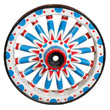In the early 1920s, the Hagenbeck-Wallace started building a heavier drop frame wagon that allowed for a lower load and yet carried more baggage inside. Knowing that the Hagenbeck-Wallace Circus was wintering in West Baden, Indiana, it is then “Assumed” that this wagon was built there. At least one other wagon # 26, was built of the same design at the same time. That wagon is discussed in a separate wagon file. The drop frame begins right behind the turning radius of the front running gear. This wagon and wagon # 26 are both found to have a medallion ornamentation on the drop frame using four decorations on each side. The first time we find any photographic evidence of this wagon is in 1922 when a photograph of the wagon with a lion in a cage laying beside a person is painted on the side. This same painting was seen on a Howe’s Great London Tableau in 1920. The most distinguished part of this wagon is the “S” type carvings at each end of the skyboard plus another medallion carving in the center of the skyboard. In the drop frame, the most noticeable part will be a curved spline in the wood going towards the front of the wagon. This curve makes this wagon identifiable in other photos.
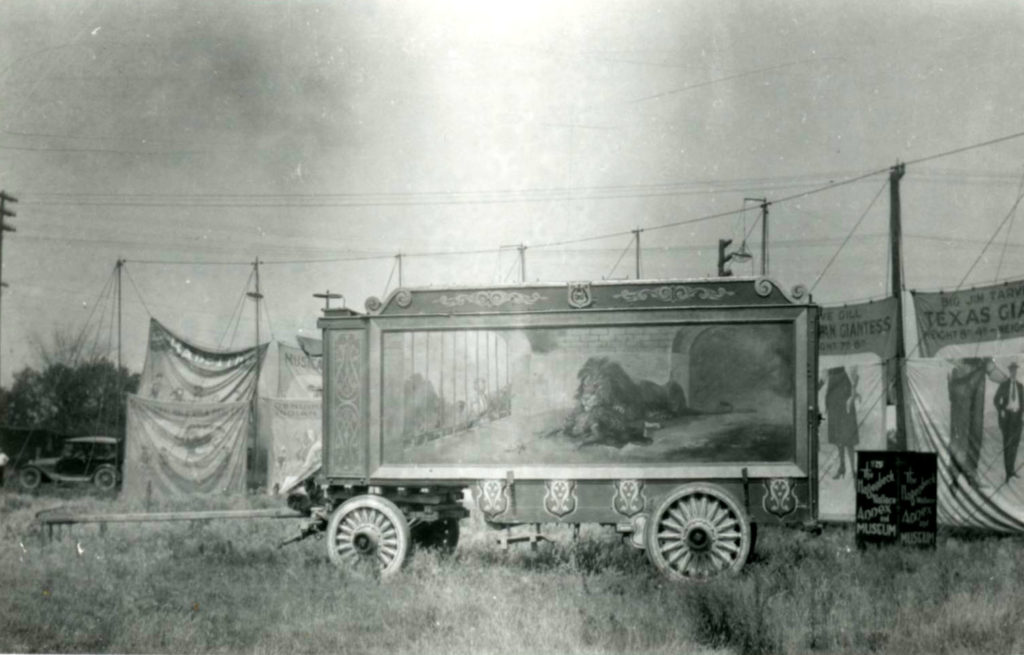 ( 1922 – Conover Set # 801 – photo # 322 )
( 1922 – Conover Set # 801 – photo # 322 )
The 1922 loading lists called this wagon # 27 – Side Show Performers Dressing trunks 19ft. This inventory was taken on June 1, 1922 but there is no notation as to who took the loading list. The 1923 loading list called this # 27 – Tableau – Side Show trunks, 19ft. There are no other loading lists or wagon compilations that I know of until 1937 when the Hagenbeck-Wallace Circus was leased to the H & A Circus Operating Co. This wagon is not on the 1937 list. This image, taken in 1927, shows the same painting still exists on the side of the wagon.
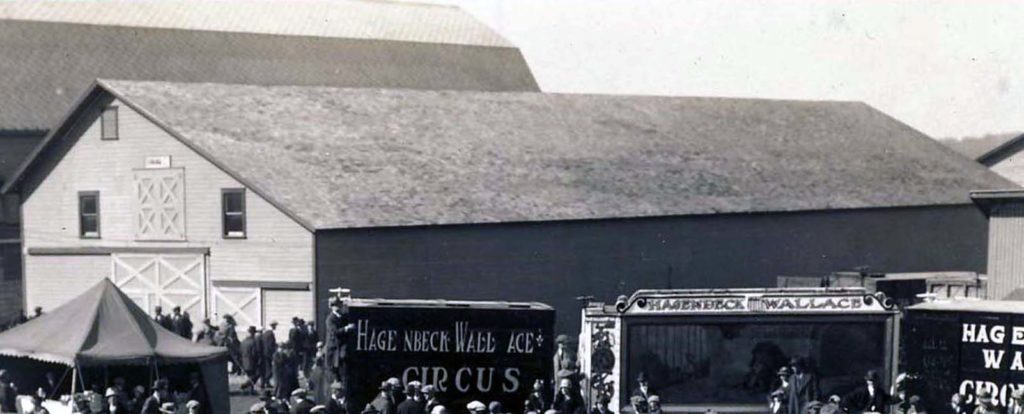 ( 1927 – This is a cropped portion of a Burt Wilson photo )
( 1927 – This is a cropped portion of a Burt Wilson photo )
Unlike it’s sister wagon, # 26, we find this wagon was still on the Hagenbeck-Wallace Circus into the 1930s. By 1932, this wagon was changed quite a bit. The painting was gone and the side was completely lettered now as this wagon served as the Grand Stand Ticket wagon after being unloaded each day.
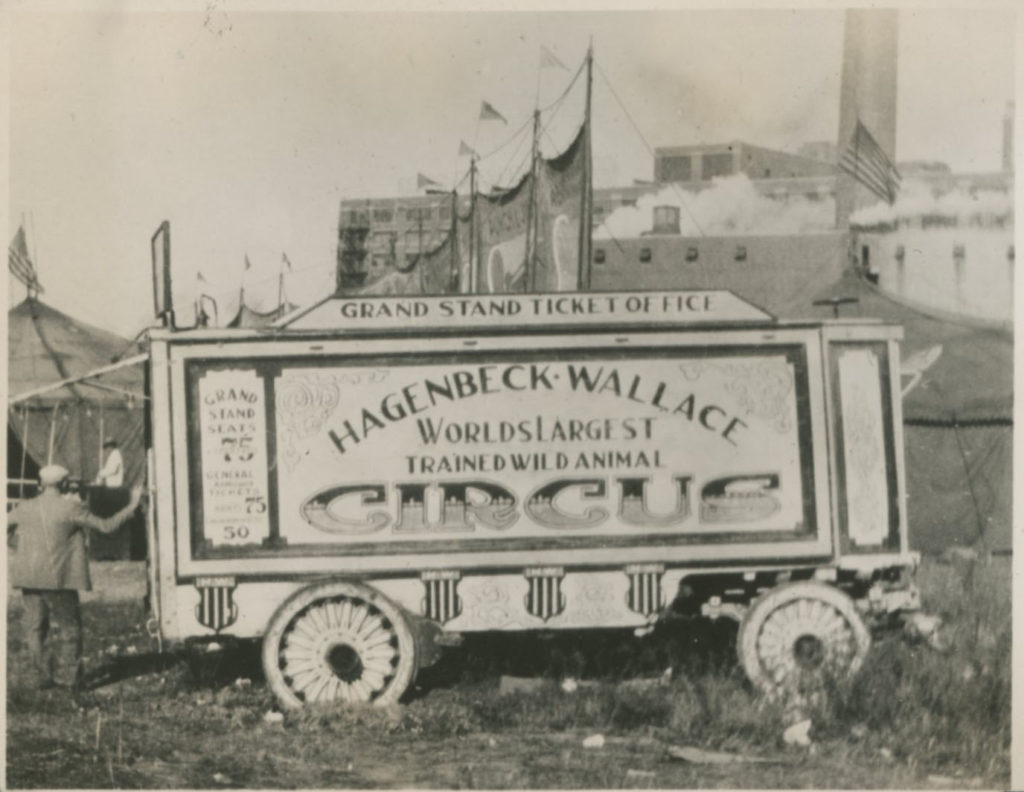 ( 1932 – Joseph Bradbury Album # 9 – photo # 42A )
( 1932 – Joseph Bradbury Album # 9 – photo # 42A )
While the Skyboard has changed along with the added lettering on the side, the drop frame shows that curve that was mentioned before. That identifiable feature has helped sort these wagons out to develop their histories. The same wagon served as the Grand Stand Ticket Wagon in 1933 as well. The lettering on the side had not changed. We can see the wagon number in this photo. It now can be seen carrying the wagon number 91.
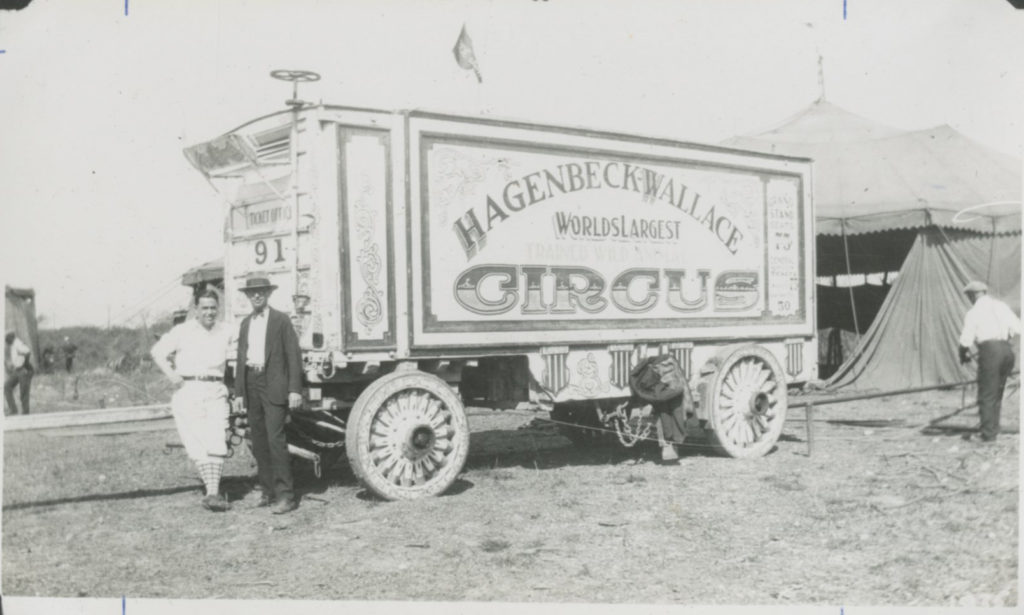 ( 1933 – Hagenbeck Wallace is in San Antonio, TX. on Monday Oct. 16, 1933 – Scaperlanda Bros. photo )
( 1933 – Hagenbeck Wallace is in San Antonio, TX. on Monday Oct. 16, 1933 – Scaperlanda Bros. photo )
That curve in the front of the drop frame can be seen in this photo as well. Please note that we are still seeing those 18 spoke wheels that these drop frame wagons had for the heavy loads contained therein. This is the last photo I can find to verify where this wagon was until 1940.
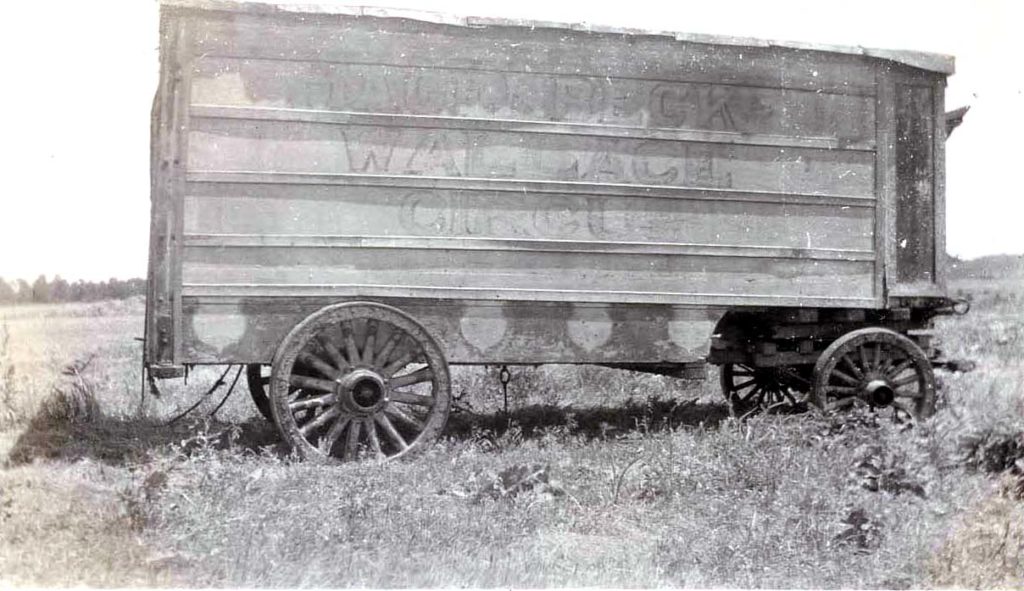
Again, you can see the curvature of the front of the drop frame that has helped us sort this wagon from the others that were built. I’m not sure what the wooden strips were for. While the lettering is faint, it is different than what we see in the other photos. This makes us question what year this lettering was used in? Of great importance at this point in time, is the fact that the solid 18 spoke sunburst wheels that had been on this wagon for twenty years, have now been removed and replaced with a standard 16 spoke baggage wagon wheel.
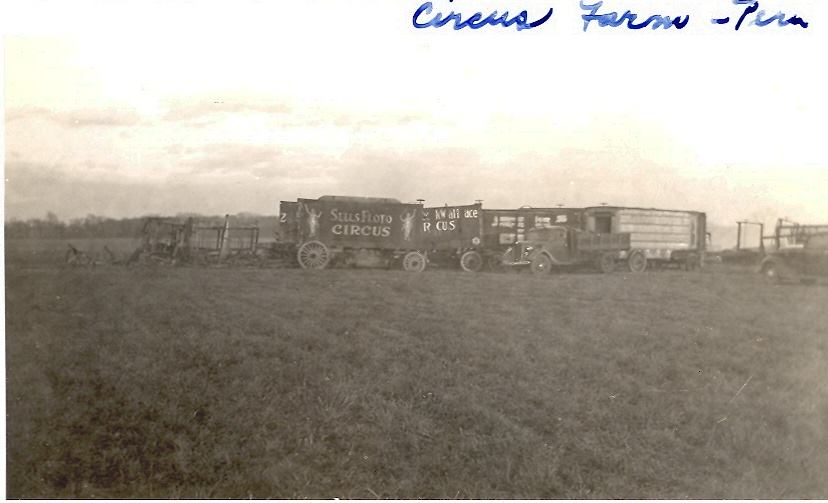 ( Nov. 1941 – preparing for the wagon burnings at the Peru Winter Quarters – Doug Konkle collection )
( Nov. 1941 – preparing for the wagon burnings at the Peru Winter Quarters – Doug Konkle collection )
Now knowing that this wagon was taken to the Burn pile in November of 1941, we can be positive that this wagon did not become one of the other Painted side drop frame wagons of the mid 1930s. Of the other drop frame wagons, the Mother Goose tableau burned in a fire in California in early 1946. The Fairy Tales tableau and the one called the Charging Tiger both survive at Circus World in Baraboo, Wisconsin.
If you have any questions or have more photographic evidence, feel free to contact us at circuswagons@gmail.com
